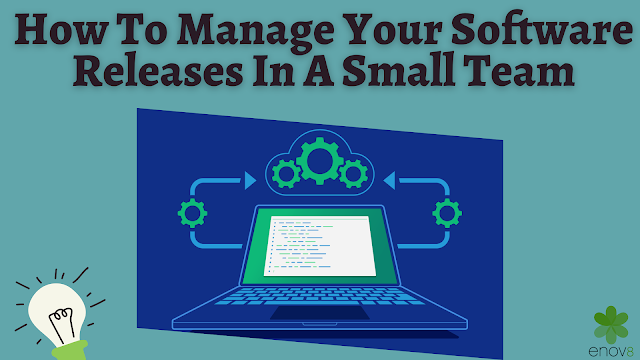How To Manage Your Software Releases In A Small Team
Software engineering has become a rapid cycle of developing, testing, and deploying new software versions for complicated platforms.
Though many companies are not often updating the software, harmonising the development and release of new software or software versions is a challenging task. As a result,software release management is flourishing as a discipline.
However, many small companies do not deploy DevOps or have infrastructure engineers to support the release management.
To add to that, one or only a few people are aware of the process complexity, which is not documented correctly, leading to confusion.
Moreover, digital transformation calls for quickly delivering software-driven value to the customers with security, quality, and compliance as a base. Hence, the number of releases increases, but without conscious management, it becomes chaotic.
With more releases, the release management objectives become valuable.
So, this blog will unfold everything you need to know about software release management.
What is Software Release Management?
When companies focus on release management, they can enhance the speed, quality, and efficiency of updating or developing software. The process entails planning, scheduling, and managing the software by taking various resources and tasks into consideration.
Test environment management tools like DevOps, agile development, release automation, and continuous delivery have optimised release management.
What are the benefits of release management?
Dependency management leads to the elimination of unseen failures
Minimisation of risks related to release activities
Accelerate release time
Deliver more value to the customer, leading to higher customer engagement
Better company performance
Continuous improvement in software delivery made possible
The development process is streamlined and standardised
Software Release Management Best Practices
Define success criteria
How will you know if the software is ready for release? Quality managers, product owners, and release managers must define major release matrics and consent to acceptance criteria before going forward with any software development project.
Also Read: IT Test Environment Management: What, Why And How
Attempt for minimum user impact
It is essential to reduce two crucial events:
1. Impact on customers
2. Downtime
You can use active monitoring, real-time collaborative alerting, and proactive testing to identify the issues. Moreover, if you also add collaborative response plans to the list, your team will easily rectify problems.
Streamline QA and CI/CD
Shift-left practice - planned to discover and prevent defects ahead of time in software development - is common and helpful. You can shift automation, QA, and testing earlier in the cycle to discover potential problems quickly.
It allows the delivery pipeline to move forward and minimises feedback loops time. So, if you integrate testing at several stages in the development workflow, you can maintain a consistent CI/CD pipeline.
Utilise automation
Automation of processes that enhances the efficiency of processes, people, and technology is the thumb rule in DevOps services and solutions.
You should use automation to minimise human error for QA, IT operations, or software development. With automation, you can make everyday processes easier for your team.
As a result, your team will spend more energy and time on strategic thinking and deliver excellent services to your customers.
Make things immutable
Immutable objects cannot be altered in programming once they are created. Instead, teams will have to create new configurations.
So, when you make things immutable, your team will not be able to modify them, reducing bugs and errors. Hence, software releases become more reliable, which leads to satisfied customers.
Release Management Terms
Release value stream
The process that creates or adds value across the release pipeline.
Release Pipeline
A certain process from feature planning to delivery.
Release policy
The definition of standards, release types, and governance needs for a firm.
Release template
It is a solo, reusable workflow process for the release pipeline. It includes automated and human
activities and acts in accordance with release policy.
Release plan
A release template is developed for a specific reason.
Deployment plan
Functions to deploy a release to the production environment.
Release unit
When you release a suit of artifacts to execute a certain feature.
Release package
A union of release units that are deployed together as a solo release as a result of
scheduling, interdependencies, and business priorities.
Major releases
These are the occasional releases that include several release units having a greater business impact.
10. Minor releases
These are the frequent releases having lesser release units without mission-critical elements.
Conclusion
It is essential to have a well-defined release management process irrespective of the user
base, complexity, and size of the company. You can use the above guide, and you will
eventually develop your own process.
Then, focus on automating processes and discover areas that need improvements. Ultimately,
automation must be your aim, but you should not focus on it from the start, or you might face difficulties.
.png)



Comments
Post a Comment